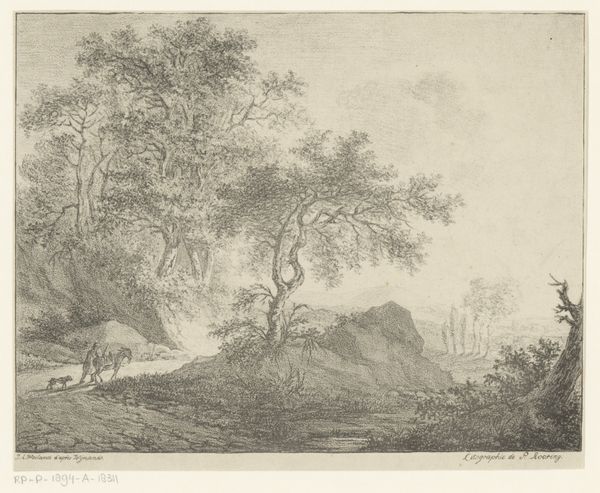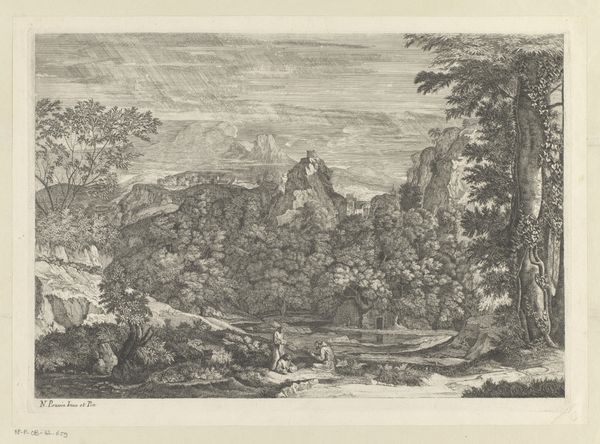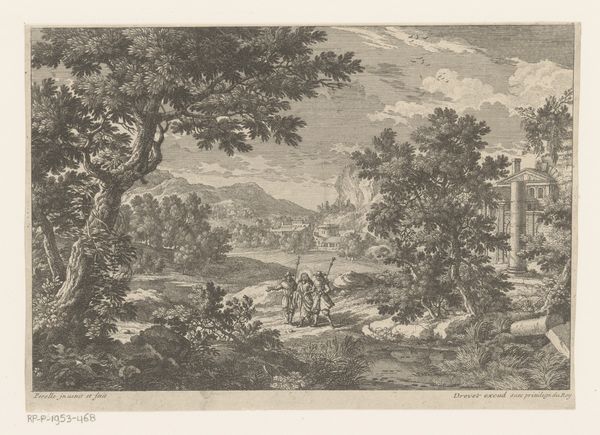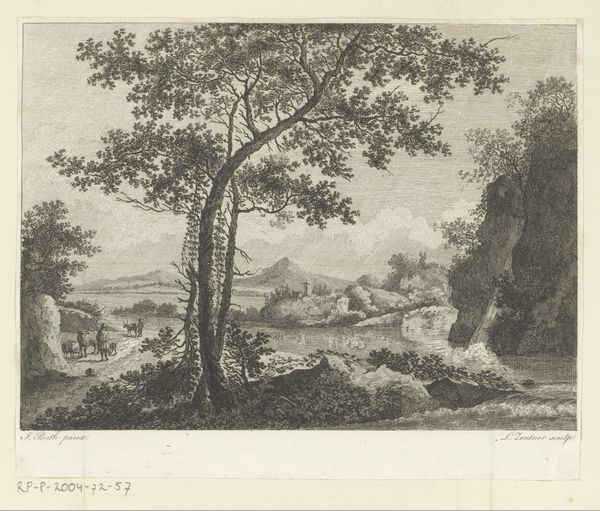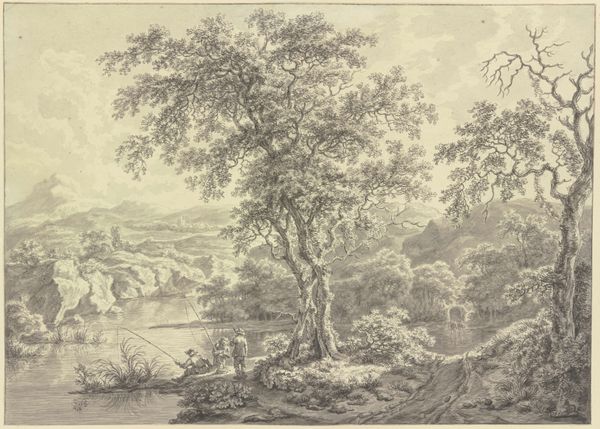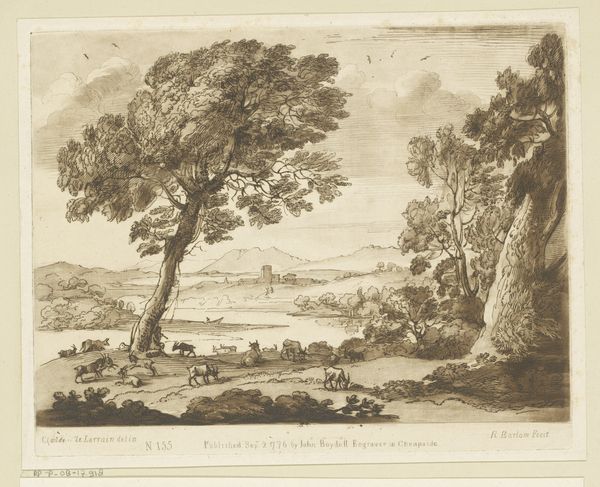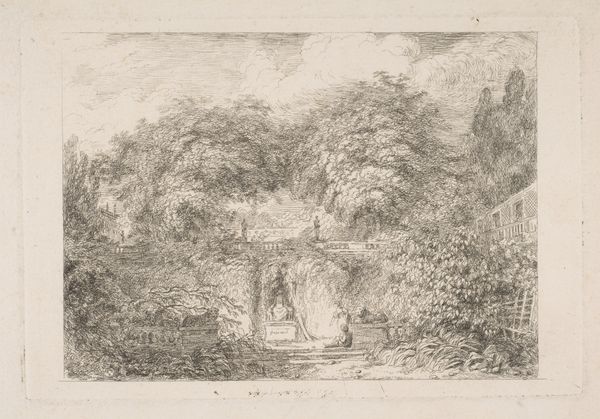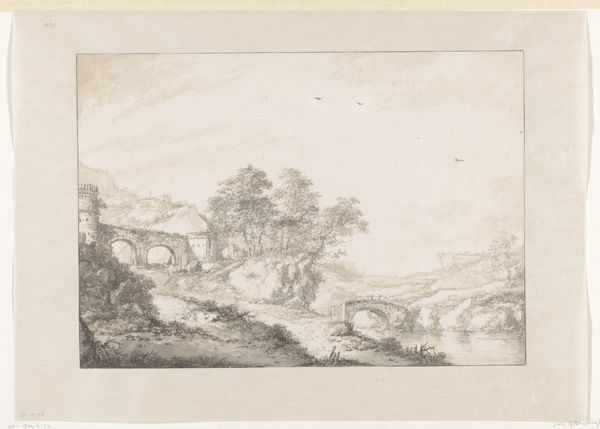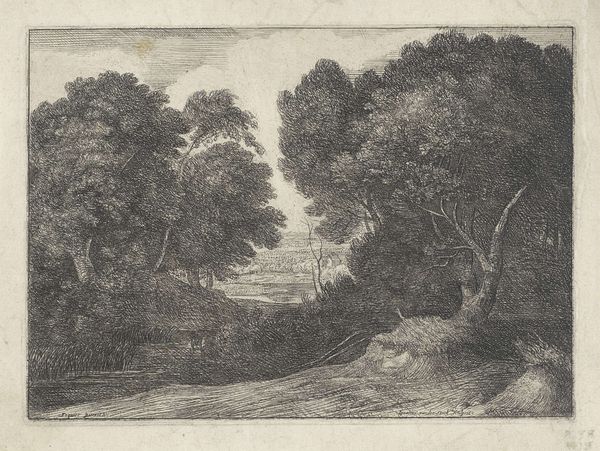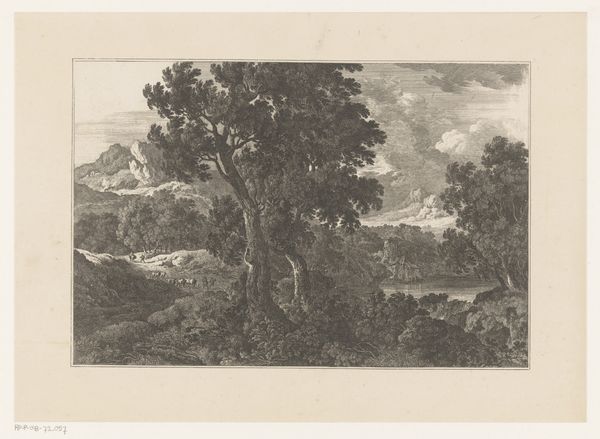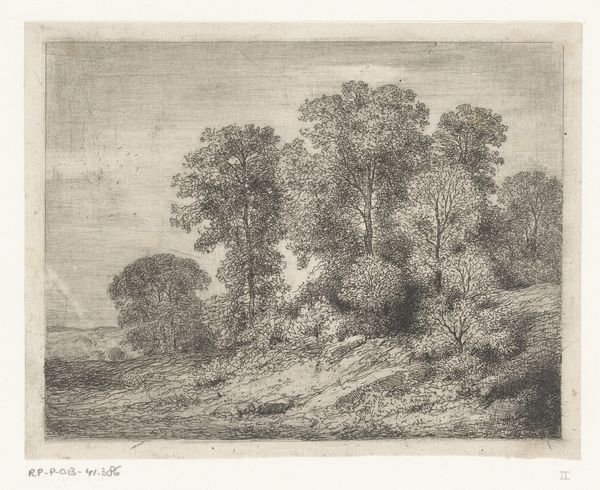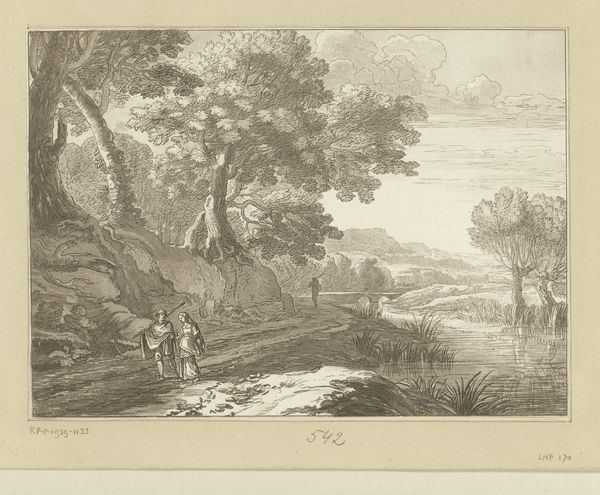
print, etching
# print
#
etching
#
landscape
#
figuration
#
romanticism
Dimensions: height 180 mm, width 237 mm
Copyright: Rijks Museum: Open Domain
Joseph Charles Cogels made this Italian landscape with figures in the early 19th century using etching, a printmaking technique. The image begins as a metal plate, usually copper or zinc. The etcher coats the plate with a waxy, acid-resistant ground, then scratches into it with a pointed needle. When the plate is dipped in acid, this etches the exposed lines, leaving an image that can be inked and printed. Here, the fineness of line suggests considerable skill. You can see this in the way Cogels renders the volume of the trees and distant hills. He must have carefully controlled the depth of his marks by regulating the acid bath, resulting in the image’s subtle tonalities. The etching process also invites the creation of multiple originals. Prints like these were relatively inexpensive, consumed by a burgeoning middle class who craved picturesque views. The scene is indeed ‘picturesque,’ a mediated image of the Italian countryside as a respite from industrializing European cities.
Comments
No comments
Be the first to comment and join the conversation on the ultimate creative platform.

